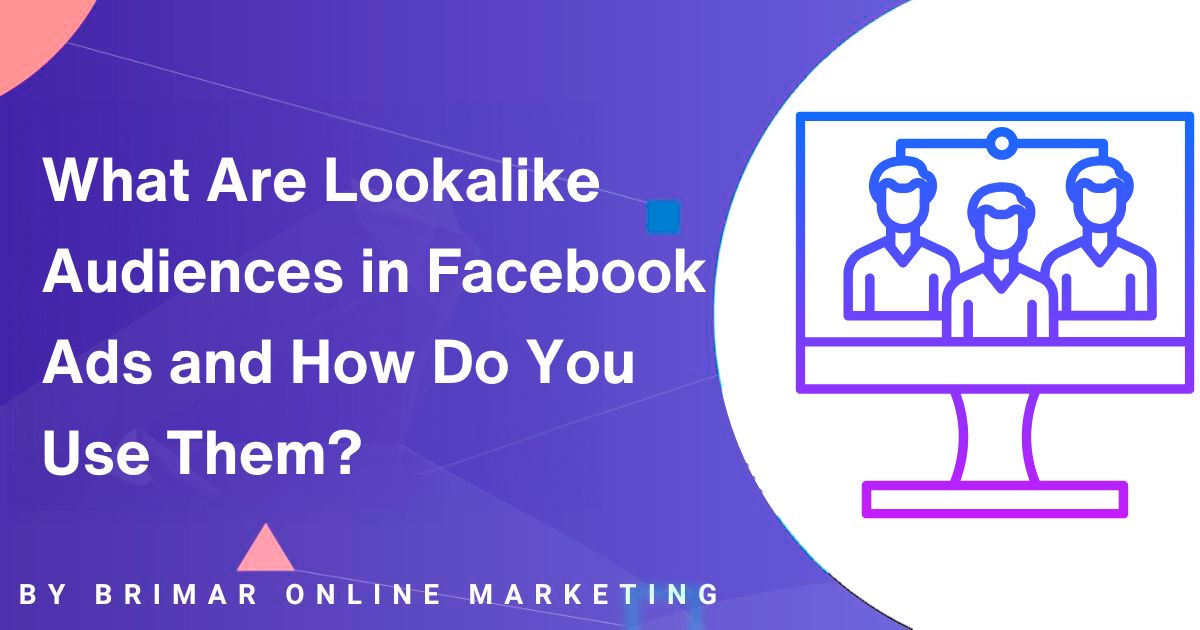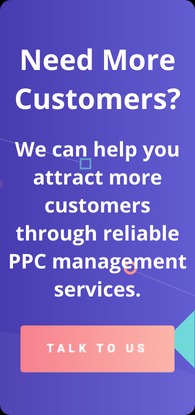
When you run Facebook (Meta) advertising, one of the biggest challenges is figuring out how to reach new customers who are likely to care about your product or service.
Lookalike audiences are a powerful tool to do exactly that: they let you reach new people who resemble your best customers.
In simple terms, a lookalike audience is an audience built by Meta’s algorithm that shares similar characteristics with a source audience (sometimes called a seed audience).
That source audience might be a customer list, a group of current customers, or website visitors who have already engaged with your brand.
Facebook’s system analyzes the data in your source, finds patterns, and then identifies Facebook users who look like your ideal customers.
Because lookalike targeting is based on data source (customer data, pixel events, etc.), it extends your reach outward from your existing audience to new audiences that are more likely to convert.
If done right, it can bring in new customers at a lower cost and higher efficiency than broad untargeted ads.
Why Use Lookalike Audiences? What’s the Value?
Before jumping into the “how,” it’s worth understanding why you should consider lookalike audiences in your Facebook ad campaigns.
- You already have a customer base or customer data. That gives you a head start.
- Instead of guessing new audiences from scratch, you let Meta’s sophisticated algorithm identify similar audiences to your source.
- You can scale your ad performance: once you confirm your target audience works, lookalike targeting helps you reach larger audiences without manually picking interests.
- Because the new people share traits with your best customers, you often see better conversion rates and lower cost per acquisition.
- It lets you optimize for brand awareness or direct response, depending on your specific goals.
- Finally, it’s a strong best practice in Facebook advertising for growing reach while maintaining relevance.
However, note that lookalikes are not a silver bullet.
They work best when you already have clean data and a reasonably sized source.
When your source is too small, or your data is inaccurate, lookalikes might underperform.
Start Attracting Customers Through PPC Advertising Today!
We can help you create PPC campaigns that attract customers. Our services include bid management, keyword management, landing page performance reviews, and more.
The Source Audience: Building a Strong Foundation
Everything depends on the seed audience or source audience you choose.
A weak source = weak lookalike.
Here are key considerations:
Types of Source Audiences (Seed Data)
You can use different data sources as your seed:
- Customer list / custom audience list: Upload your email list (with opt-ins), phone numbers, or other identifiers. This is a classic approach because you’re using your existing customers or people who have already shown trust.
- Website visitors / pixel data: With the facebook pixel installed on your website, you can track user events (page views, add to cart, purchases) and use those as your source audience.
- App activity: If you run an app, you can use events from your app as a source.
- Engagement / facebook page interactions: People who interacted with your facebook page or posts can serve as seed.
- Value-based source: Instead of using all customers, you might use your top 10% by lifetime value. That helps create lookalikes of your most profitable customers.
To get the most out of lookalike targeting, your seed should be accurate data, clean (with no spam or invalid entries), and ideally of a decent size (often hundreds to thousands of people).
The more consistent and “good” your source is, the more precise your lookalike will be.
How to Create Lookalike Audiences: A Step-by-Step Walkthrough
Here’s how you can go from your existing data to a lookalike audience that powers new ad set campaigns:
Step 1: Prepare Source Data / Seed Audience
- Choose one or more audience lists that best represent your ideal customers.
- Clean the list: ensure emails/identifiers are valid.
- If using pixel data, confirm your Facebook pixel is firing correctly and tracking relevant events (view, purchase, add to cart).
- If you’re aiming for a value-based source, segment by customer value.
Step 2: Go into Facebook Ads Manager / Meta Business Suite
- In your Facebook Ads account, open the Audiences
- Click Create Audience, then Lookalike Audience.
- Select the source audience (your seed). You may also choose whether to use pixel data, a customer list, or app events.
Step 3: Select Audience Location
- Choose the target country or region (e.g., the United States).
- It’s typical to build single-country lookalikes (so that comparisons are accurate).
- You can also test expansion to broader audiences in additional regions.
Step 4: Select Audience Size (Choose Percentage)
- Facebook offers a percentage range (1% to 10% or more) that determines how closely the lookalike matches your seed.
- A 1% lookalike is the closest match—small but precise.
- As the percentage increases (2%, 5%, 10%), the audience becomes a larger audience but less tightly aligned; it’s a trade-off between reach and similarity.
- Many advertisers aim for the sweet spot somewhere between 1 and 3%, or test multiple percentages side by side.
- Once selected, click Create. The lookalike audience will take some time to populate.
Step 5: Add Lookalike to Your Ad Set
- When launching a Facebook ad campaign, select the lookalike audience as the targeting group at the ad set level.
- Avoid layering too many restrictive criteria, as this may reduce the value of the algorithm’s matching.
- If appropriate, you can combine interest targeting or demographic filters, but tread carefully to avoid overriding the benefits of the lookalike.
- Run A/B testing: compare different lookalike percentages against each other or against other audience types.
Best Practices for Lookalike Targeting
To get better results, follow these tips:
Start with Your Best Customers
Use your top 5–10% most profitable customers or those with high lifetime value.
That helps feed the algorithm with patterns of ideal customers.
Test Multiple Audience Sizes
Create multiple lookalikes 1%, 2%, 5% and test which percentage delivers the best results.
This experimentation helps you find what works for your product.
Monitor Metrics Closely
Watch conversion rate, click-through rate (CTR), cost per acquisition, and ROI.
If a lookalike underperforms, pull back and test alternatives.
Refresh Your Source Data Regularly
New customers come in, behaviors shift.
Update your customer list, pixel data, and website traffic regularly.
Refreshing helps maintain accurate data and avoids stale lookalikes.
Avoid Overlap and Audience Cannibalization
Make sure your lookalike audience doesn’t overlap heavily with another custom audience you’re already targeting (like website visitors).
Overlap can reduce efficiency and drive up costs.
Use Complementary Strategies
Don’t rely solely on lookalikes.
Combine with broad targeting, interest targeting, and saved audience strategies to diversify reach.
Some reports suggest broad targeting or advantage+ audiences may outperform lookalikes in certain accounts.
Use Value-Based Lookalikes
When possible, feed value metrics (how much a customer spent) to your source.
That way, your lookalike focuses not just on behavior but on customer value.
Facebook supports value-based source lookalikes.
Small or Wide? Choose Wisely
- Smaller lookalike audience (1–2%) gives more precision but fewer people.
- Larger audiences (5–10%) increase reach but risk diluting similarity.
- Many high-performing accounts pick audiences in the 1–3% range, then scale from there.
When Lookalikes Work Best (and When They Don’t)
Good Situations for Lookalikes
- You already have a customer list or good volume of website traffic.
- You want to expand reach to new users but not throw money at random audiences.
- You want to test new markets or new states in the United States.
- You’re aiming to boost brand awareness while still maintaining relevance.
- You need to scale campaigns after initial success with an existing audience.
When Lookalikes May Struggle
- If your customer base is tiny or too narrow, the algorithm has limited data to model.
- If your customer data is messy or low quality.
- If your business is hyper niche and behaviors don’t generalize well.
- When algorithm changes or privacy constraints reduce signal strength (e.g. iOS, ad platform updates).
In such cases, pairing lookalikes with broad targeting or advantage+ strategies might yield better results.
Common Questions (FAQs)
Do Facebook lookalike audiences still work in 2025?
Yes, they remain one of the core tools in Meta ads.
However, their performance depends heavily on data quality and testing.
Some advertisers now use them in combination with broad targeting and automated tools.
What’s the minimum size for the source audience?
The absolute minimum is 100 people in the same country.
But to get useful insights, many advertisers aim for 1,000 or more.
Which % size should I pick?
Start with small (1–2%) for precision, then test 3–5% or more to see where performance holds.
The sweet spot depends on your niche, budget, and how well your seed data predicts new behavior.
Is it a good idea for small businesses?
Yes, if you already have a clean email list, customer list, or consistent website traffic.
With good seed data, even smaller businesses can see lower cost acquisition through lookalike targeting.
Do lookalikes replace custom audiences?
No, they complement them.
You’ll often retarget your existing custom audiences, and prospect with lookalike audiences.
Together they create a full funnel.
What if I forgot my account / new account?
If your ad account is new or you’ve lost access, you’ll need to rebuild or reconnect your customer data, pixel, and custom audiences.
Without a solid data source, lookalike targeting won’t be effective.
Putting It Into Practice: Tips for Getting Started
- Select your strongest seed audience, such as your email list or your most valuable customers.
- Create multiple lookalike segments (1%, 2%, 5%) in your target country (e.g., the United States).
- Launch separate ad sets for each lookalike and track which one drives a better conversion rate or ROI.
- Refresh your source data every few weeks so your lookalikes reflect new behavior.
- Don’t overload your ad set with too many filters; let the algorithm do its job.
- Test combining lookalikes with interest targeting or demographic filters, but cautiously.
- Scale what’s working, when your lower-percentage lookalike performs, increase the budget or expand the percentage gradually.
Lessons & Pitfalls to Watch Out For
- A lookalike is only as good as its seed. Bad data leads to poor matching.
- If you layer heavy interests or demographics over a lookalike, you might break its value.
- Audience overlap is sneaky. Make sure you exclude audiences you’re already using elsewhere.
- Don’t assume bigger is better—larger audiences might bring in fewer people who truly match your ideals.
- Monitor performance metrics (CTR, conversion rate, cost per acquisition) and adjust.
- Keep an eye on platform updates—changes to privacy or tracking can affect the signal strength your pixel data provides.
Final Thoughts
Lookalike audiences are a powerful tool in your Meta ads toolkit.
When you feed accurate, high-quality seed data (customer lists, pixel events) into Facebook Ads Manager / Meta Business Suite, you give the algorithm a chance to discover new people much like your existing audience.
Over time, with consistent testing of percentage sizes, ad sets, and audience types, you can scale your reach without sacrificing relevance.
Used properly, lookalike targeting helps you reach larger audiences, deliver brand awareness, and drive better results at lower cost.
But the real secret lies in ongoing optimization, refresh your data, test, compare, and refine.
That’s how you turn lookalikes from a promising idea into a reliable growth channel for your business.
Our PPC Services Have Helped Our Clients Increase Their Revenue!
“I highly recommend Brimar if your looking to grow your online business. You will be satisfied with the high level of expertise and high quality of services. It has helped my business grow by leaps and bounds.”
CEO
